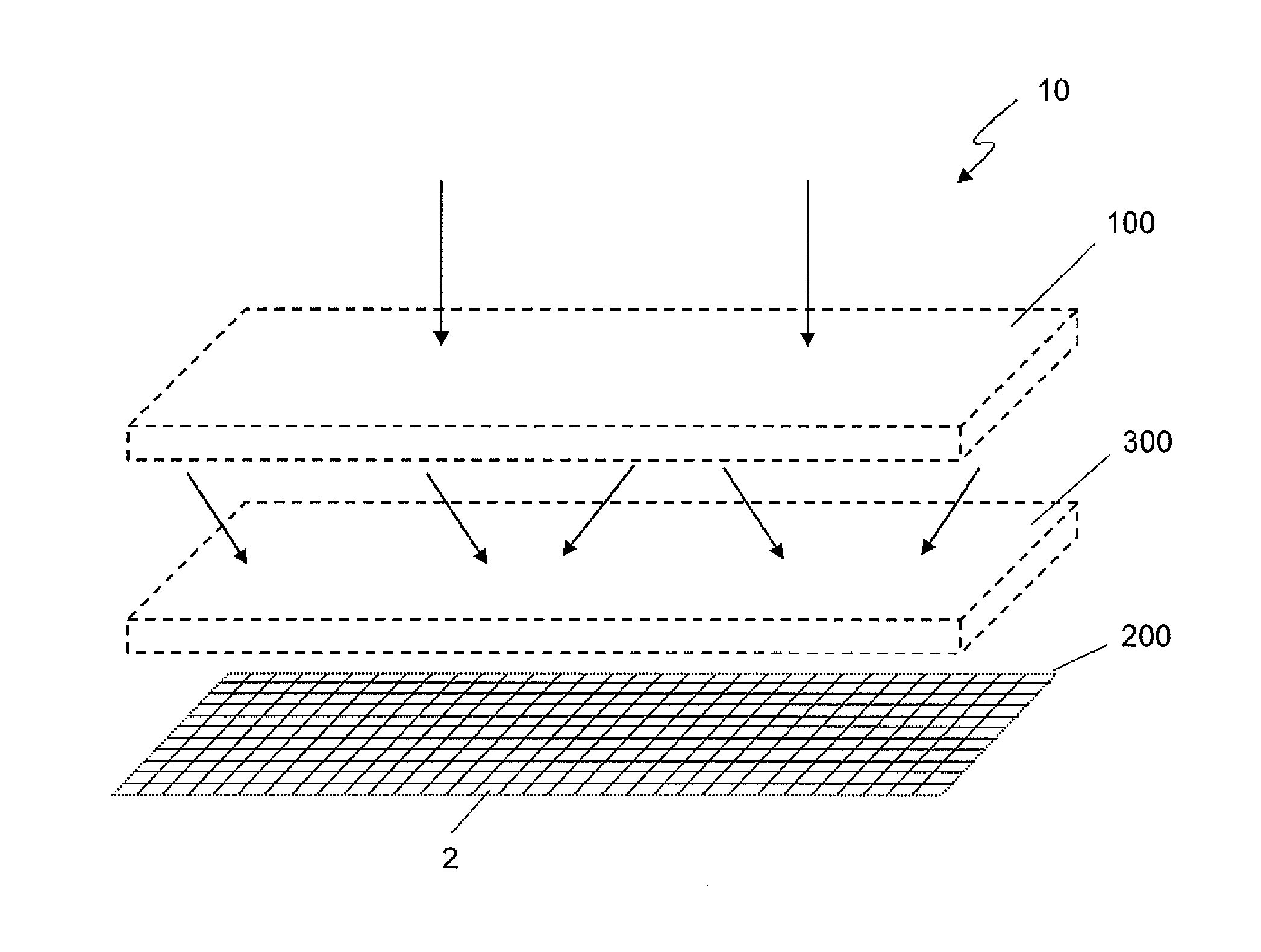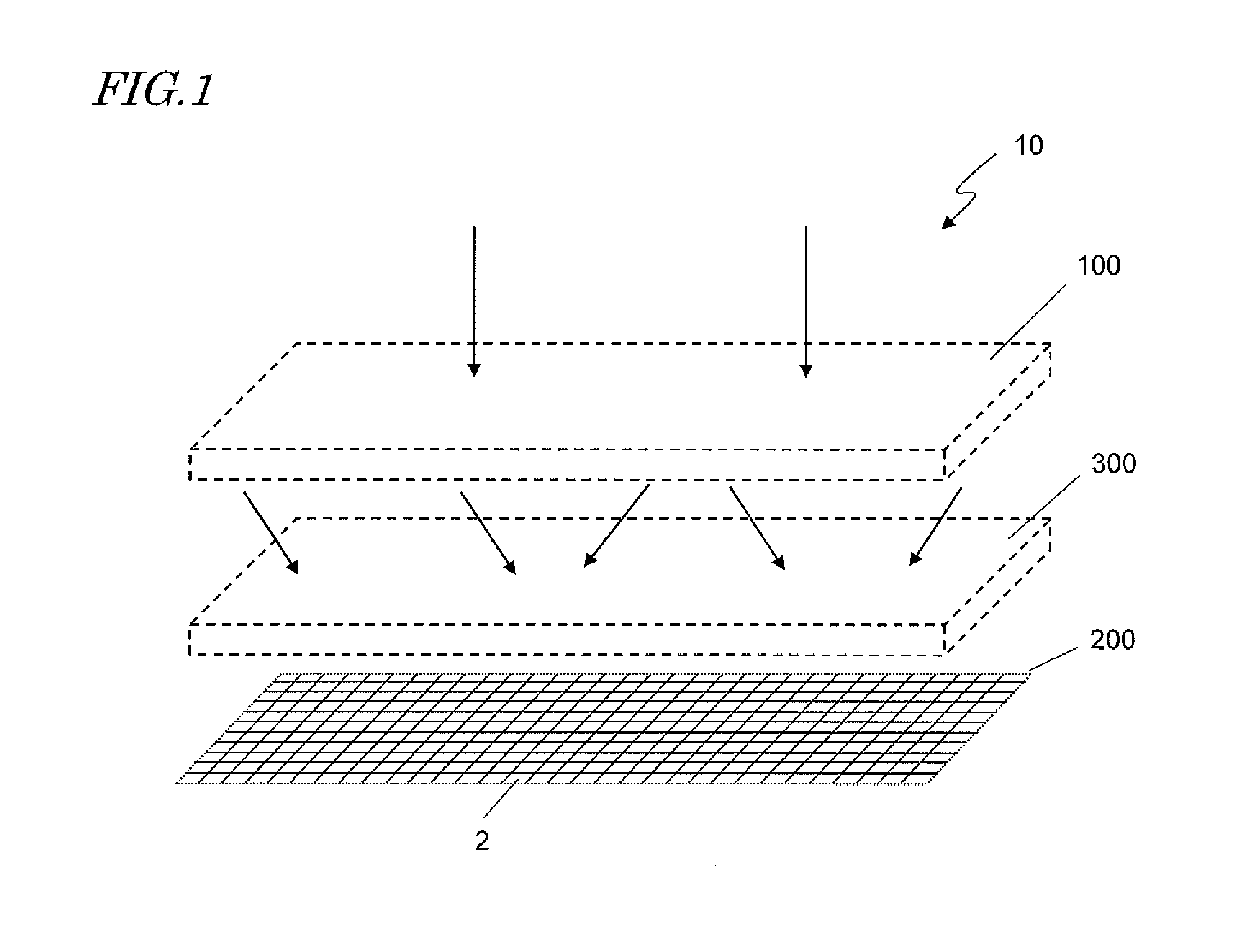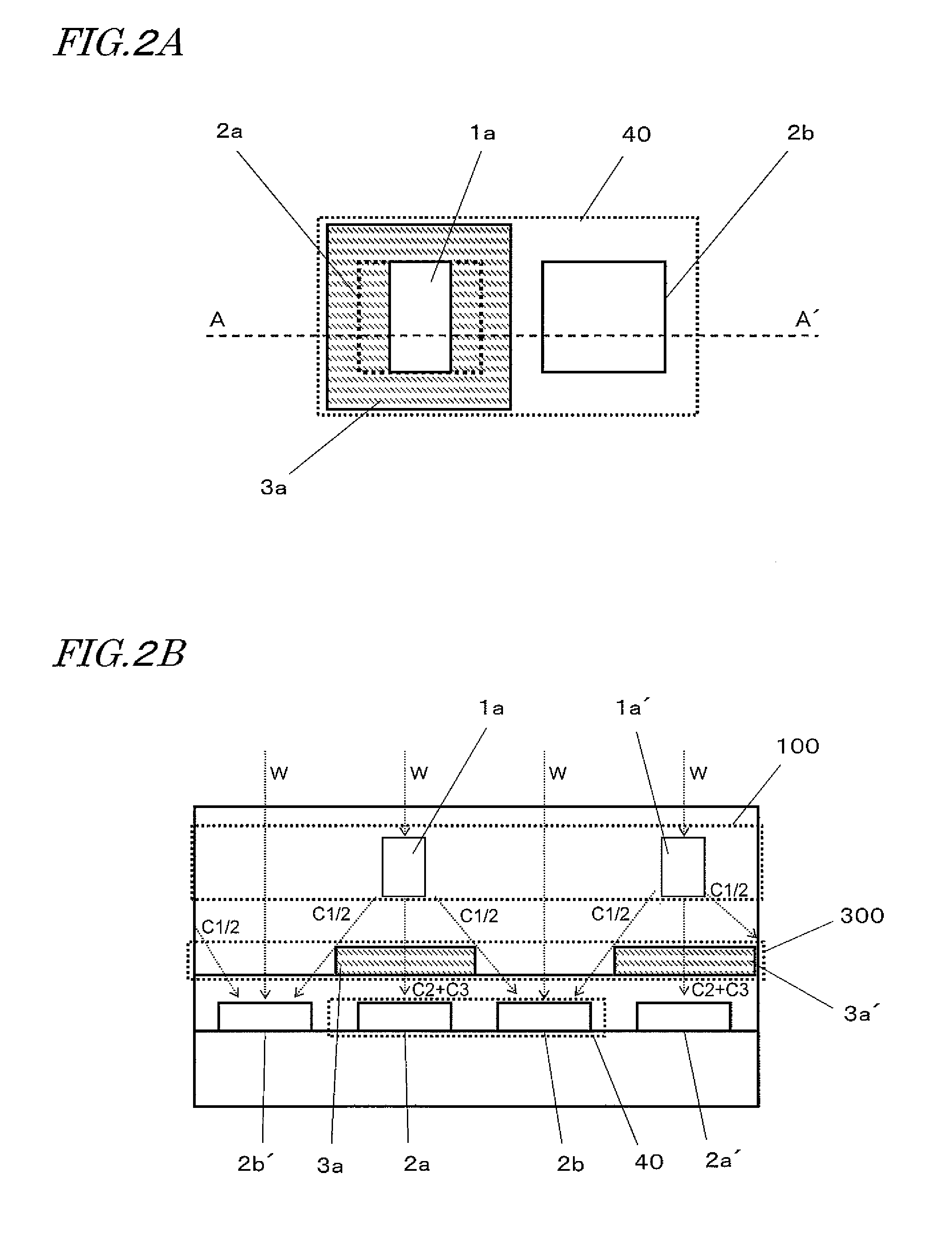Solid-state imaging element and imaging device
a solid-state imaging and imaging element technology, applied in the field of solid-state imaging elements and imaging devices, can solve the problems of reducing the optical efficiency of the camera, the decrease of the optical efficiency of the color filter, and the low intensity of the light falling on a single pixel, so as to achieve a optical efficiency. , the effect of high degree of color reproducibility
- Summary
- Abstract
- Description
- Claims
- Application Information
AI Technical Summary
Benefits of technology
Problems solved by technology
Method used
Image
Examples
embodiment 1
[0082]FIG. 6 is a block diagram illustrating an overall configuration for an image capture device as a first preferred embodiment of the present invention. The image capture device of this preferred embodiment is a digital electronic camera and includes an image capturing section 500 and a signal processing section 400 that receives a signal from the image capturing section 500 and outputs a signal representing an image (i.e., an image signal). The image capture device may either generate only a still picture or have the function of generating a moving picture.
[0083]The image capturing section 500 includes an optical lens 12 for imaging a given subject, an optical filter 11, a solid-state image sensor 10 (which will be simply referred to herein as an “image sensor”) for converting the optical information that has been gotten through the optical lens 12 and the optical filter 11 into an electrical signal by photoelectric conversion. The image capturing section 500 further includes a ...
embodiment 2
[0124]Next, a second specific preferred embodiment of the present invention will be described with reference to FIGS. 11A through 11C. The image capture device of this preferred embodiment has the same configuration as the counterpart of the first preferred embodiment described above except the structure of the image sensor 10. Thus, the following description of this second preferred embodiment will be focused on only the difference from the first preferred embodiment and description of their common features will be omitted herein.
[0125]FIG. 11A is a plan view illustrating the basic structure of the image sensor 10 of this preferred embodiment. In each unit block 40, two dispersing elements 1a and 1d are arranged so as to respectively face two 2a and 2d out of the four photosensitive cells 2a, 2b, 2c and 2d. The dispersing elements 1a and 1d have the same property as the dispersing elements 1a and 1d of the first preferred embodiment described above. A color filter (Ye filter) 3a, w...
embodiment 3
[0139]Next, a third specific preferred embodiment of the present invention will be described with reference to FIGS. 12A through 12C. The image capture device of this preferred embodiment has the same configuration as the counterpart of the first preferred embodiment described above except the structure of the image sensor 10. Thus, the following description of this third preferred embodiment will be focused on only the difference from the first preferred embodiment and description of their common features will be omitted herein.
[0140]FIG. 12A is a plan view illustrating the basic structure of the image sensor 10 of this preferred embodiment. In each unit block 40, three dispersing elements 1b, 1cc and 1d are arranged so as to respectively face three 2b, 2c and 2d out of the four photosensitive cells 2a, 2b, 2c and 2d. The dispersing elements 1b and 1d have the same property as the dispersing elements 1b and 1d of the first preferred embodiment described above. The dispersing elemen...
PUM
 Login to View More
Login to View More Abstract
Description
Claims
Application Information
 Login to View More
Login to View More - R&D
- Intellectual Property
- Life Sciences
- Materials
- Tech Scout
- Unparalleled Data Quality
- Higher Quality Content
- 60% Fewer Hallucinations
Browse by: Latest US Patents, China's latest patents, Technical Efficacy Thesaurus, Application Domain, Technology Topic, Popular Technical Reports.
© 2025 PatSnap. All rights reserved.Legal|Privacy policy|Modern Slavery Act Transparency Statement|Sitemap|About US| Contact US: help@patsnap.com



